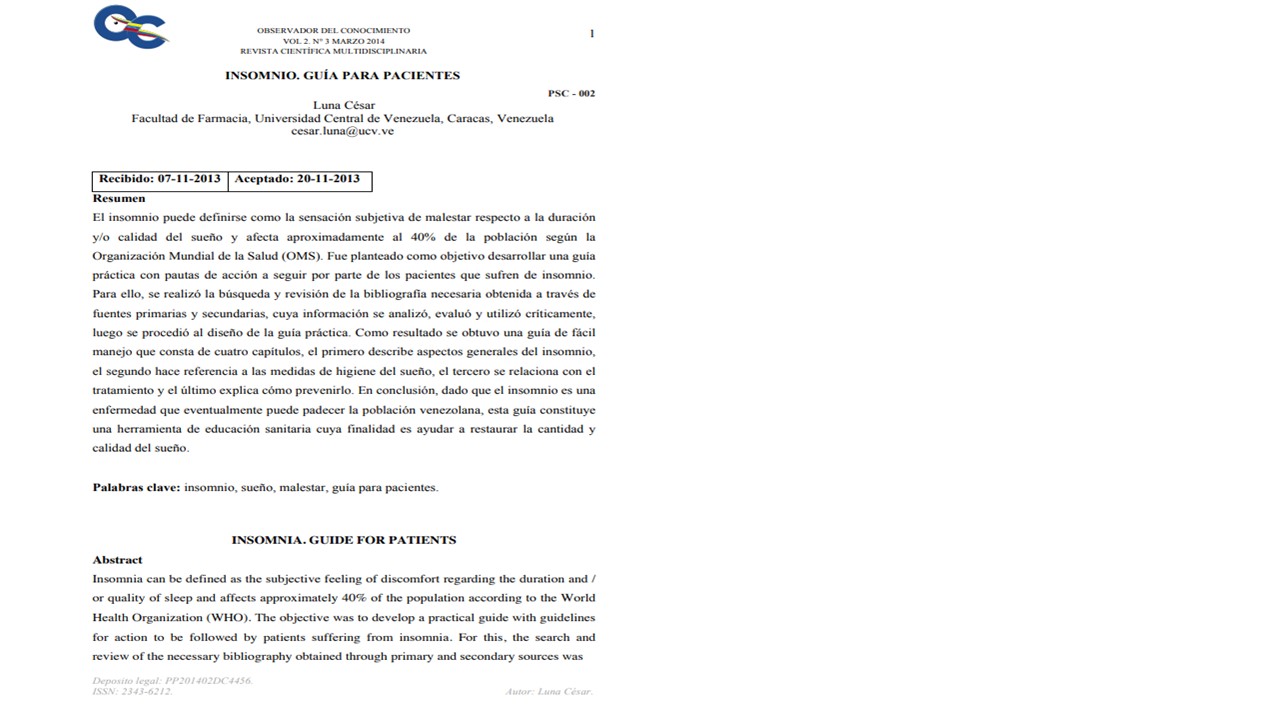Susceptibility to Antimicrobials No Betalactámicos of Geographical Isolates of Corynebacterium Pseudotuberculosis, in Caprine Flocks of The Falcon State
Keywords:
Zoonotic risks, antimicrobial susceptibility, bacteriological analysisAbstract
Caseosa lymphadenitis is a chronic bacterial disease that affects small ruminants, characterized by suppurative necrotizing inflammation of lymph nodes; It is caused by Corynebacterium pseudotuberculosis and highly contagious, generating zoonotic risks and economic losses due to the reduction of weight gain, milk production and discarding of animals, impacting the productive potential in this type of livestock. The objective of this investigation was to describe the antimicrobial susceptibility of isolates of C. pseudotuberculosis in goat herds of the Falcón state.
Downloads
References
Abreu, S.; Mota, R.; Junior, J.; Rosinha, G.; Castro, R. (2008). Perfil de sensibilidad in vitro de aislados de Corynebacterium pseudotuberculosis de caprinos y ovinos con linfadenitis caseosa en sertao de Pernambuco, Vet. E. Zootec. 15: 502-509.
Ashfaq, M.; Campbell, S. (1979). A survery of caseous lynphadenitis and its etiology in goats in the United States. Vet. Med. Small Anim. Clinician. 74:1161-1165.
Chirino-Zárraga, C.; Scaramelli, A.; Rey-Valeirón, C. (2006). Bacteriological characterization of Corynebacterium pseudotuberculosis in Venezuelan goat flocks. Small Rum. Res. 65:170-175.
CLSI (Clinical and Laboratory Standards Institute). (2006a) Performance Standards for Antimicrobial Disk Susceptibility Tests, Approved Standard, 9th. edition, M2-A9. Clinical and Laboratory Standards Institute. Wayne, Pennsylvania.
CLSI (Clinical and Laboratory Standards Institute). (2006b) Performance Standards for Antimicrobial Susceptibility Testing, 16th Informational Supplement, M100-S16. Vol. 26. Clinical and Laboratory Standards Institute. Wayne, Pennsylvania.
Connon, K.; Fontaine, M.; Rudge, K.; Baird, G.; Donachie, W. (2007). Molecular genotyping of multinational ovine and caprine Corynebacterium pseudotuberculosis isolates using pulsed- field gel electrophoresis. Vet. Res. 38: 613-1623.
Connor, K.; Quirie, M.; Baird, G.; Donachie W. (2000). Characterization of United Kingdom isolates of Corynebacterium pseudotuberculosis using pulsed-field gel electrophoresis. J. Clin. Microbiol. 38:2633–2637.
Costa, L. (2002). Corynebacterium pseudotuberculosis, o agente etiológico da linfadenite caseosa em caprinos. Rev. Cienc. Med. Biol. 1:105-115.
Costa, L.; Spier, S.; Hirsh, D. (1998). Comparative molecular characterization of Corynebacterium pseudotuberculosis of different origin. Vet. Mic. 62:135- 143.
Garg, D.; Nain, S. (1985). Isolation and characterization of Corynebacterium ovis from sheep and goats. Indian Vet. J. 62: 805–808.
Judson, R., Songer, G. (1991). Corynebacterium pseudotuberculosis: in vitro susceptibility to 39 antimicrobial agents. Vet. Mic. 27: 145-150.
Literák, I.; Horváthová, A.; Jahnová, M.; Rychlík, I.; Skalka; B. (1998). Phenotype and genotype characteristics of the Slovak and Czech Corynebacterium pseudotuberculosis strains isolates from sheep and gosts. Small Rum. Res. 32: 107-111.
Muckle, C.; Gyles, C. (1982). Characterization of strains of Corynebacterium pseudotuberculosis. Can. J. Comp. Med. 46: 206–208.
Murray, P.; Rosenthal, K.; Pfaller, M. (2006). Microbiología Médica, [en línea]. Recuperado el 10 de mayo de 2011, ¿de http://books.google.com/books? id=ib7AiOFZE0C&printsec=frontcove r&hl=es&source=gbs_ge_summary_r& cad=0#v=onepage&q&f=true.
Zhao, H.; Morimura, H.; Hiramune, T.; Kikuchi, N.; Yanagawa, R and Serikawa, S. (1991). Antimicrobial Susceptibility of Corynebacterium pseudotuberculosis Isolates from Lesions of Caseus Lymphadenitis Sheep in Hokkaido, Japan. J. Vet. Med. Sci. 53:355-356.

Downloads
Published
How to Cite
Issue
Section
License

This work is licensed under a Creative Commons Attribution-NoDerivatives 4.0 International License.







